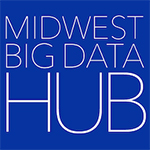By Qining Wang
When we see a stop sign at an intersection, we won’t mistake it for a yield sign. Our eyes recognize the white “STOP” letters printed on the red hexagon. It doesn’t matter if the sign is under sunlight or streetlight. It doesn’t matter if a tree branch gets in the way or someone puts graffiti and stickers on the sign. In other words, our eyes can perceive objects under different physical conditions.

However, identifying road signs accurately is very different, if not more difficult, for artificial intelligence (AI). Even though, according to Alan Turning, AIs are systems that can “think like humans,” they can still present limitations in mimicking the human mind, depending on how they acquire their intelligence.
One of the potential hurdles is to correctly interpret variations in the physical environment. Such a limitation is commonly referred to as an “adversarial example.”
What Are Adversarial Examples?
Currently, the most common method to train an AI application is machine learning, a type of AI process that helps AI systems learn and improve from experience. Machine learning is like the driving class an AI needs to take before it can hit the road. Yet machine-learning-trained AIs are not immune to adversarial examples.
Circling back to reading the stop sign, an adversarial example could be the stop sign turning into a slightly darker shade of red at night. The machine-learning model captures these tiny color differences that human eyes cannot discern and might interpret the signs as something else. Another adversarial example could be a spam detector that fails to filter a spam email formatted like a normal email.
Just like how unpredictable individual human minds can be, it is also difficult to pinpoint the exact origin of what and why machine learning makes certain predictions. Neither is it a simple task to develop a machine-learning model that comprehends the messiness of a physical world. To improve the safety of self-driving cars and the quality of spam filters, data scientists are continuously tackling the vulnerabilities in the machine-learning processes that help AI applications “see” and “read” better.
What Are Humans Doing to Correct AI’s Mistakes?
To defend against adversarial examples, the most straightforward mechanism is to let machine-learning models analyze existing adversarial examples. For example, to help the AI of a self-driving car to recognize stop signs under different physical circumstances, we could expose the machine-learning model that controls the AI to pictures of stop signs under different lightings or at various distances and angles.
Google’s reCAPTCHA service is an example of such a defense. As an online safety measure, users need to click on images of traffic lights or road signs from a selection of pictures to prove that they are humans. What users might not be aware of is that they are also teaching the machine-learning model what different objects look like under different circumstances at the same time.
Alternatively, data scientists can improve AI by teaching them simulated adversarial examples during the machine-learning process. One way is to implement a Generative Adversarial Network (GAN).
GANs consist of two components: a generator and a discriminator. The generator “translates” a “real” input image from the training set (clean example) into an almost indistinguishable “fake” output image (adversarial example) by introducing random variations to the image. This “fake” image is then fed to the discriminator, where the discriminator tries to tell the modified and unmodified images apart.
The generator and the discriminator are inherently in competition: The generator strives to “fool” the discriminator, while the discriminator attempts to see through all its tricks. This cycle of fooling and being fooled repeats. Both become better at their own designated tasks over time. The cycle continues until the generator outcompetes the discriminator, creating adversarial examples that are indistinguishable to the discriminator. In the end, the generator is kept to defend against different types of real-life adversarial attacks.
AI Risks and Responses
GANs can be valuable tools to tackle adversarial examples in machine learning, but they can also serve malicious purposes. For instance, one other common application of GANs is face generation. This so-called “deepfake” makes it virtually impossible for humans to tell a real face from a GAN-generated face. Deepfakes could result in devastating consequences, such as corporate scams, social media manipulation, identity theft, or disinformation attacks, to name a few.
This shows how, as our physical lives become more and more entangled with our digital presence, we can never neglect the other side of the coin while enjoying the benefits brought to us by technological breakthroughs. Understanding both would serve as a starting point for practicing responsible AI principles and creating policies that enforce data ethics.
Tackling vulnerabilities in machine learning matters, and so does protecting ourselves and the community from the damage that those technologies could cause.
Learn More and Get Involved
Curious whether you can tell a real human face from a GAN-generated face? Check out this website. And keep an eye out for the Smart & Resilient Communities priority area of MBDH, if you wish to learn more about how data scientists use novel data science research to benefit communities in the Midwest. There are also several NSF-funded AI Institutes in the Midwest that are engaged in related research and education.
Contact the Midwest Big Data Innovation Hub if you’re aware of other people or projects we should profile here, or to participate in any of our community-led Priority Areas. The MBDH has a variety of ways to get involved with our community and activities.
The Midwest Big Data Innovation Hub is an NSF-funded partnership of the University of Illinois at Urbana-Champaign, Indiana University, Iowa State University, the University of Michigan, the University of Minnesota, and the University of North Dakota, and is focused on developing collaborations in the 12-state Midwest region. Learn more about the national NSF Big Data Hubs community.
